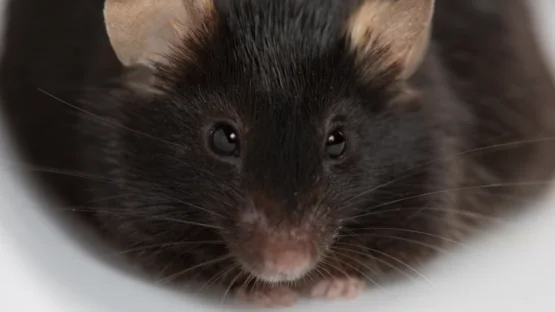In a new study published in Endocrinology and Metabolism, researchers have shown that fat rather than sugar is the macronutrient that drives obesity and other detrimental metabolic changes if it constitutes a large proportion of dietary calories [1].
Obesity, diet, and the microbiome
Obesity is associated with a dysregulation of several molecular pathways, which lead to chronic low-grade inflammation and accelerated aging. A connection between almost all age-associated diseases and obesity has been shown, although the exact mechanisms are often not known.
There are hot debates regarding what foods lead to obesity and how much impact they have, and this has spurred the development of various diets that promise great weight loss results. While the link between excessive food consumption and weight gain seems obvious, which dietary components are to blame has remained unclear.
In addition to inflammation, age-related microbiome alterations have recently been proposed as an additional hallmark of aging. Obesity is associated with altered microbiome composition [2], although the connection might be bidirectional.
The composition of the microbiome is partly shaped by the foods consumed. Therefore, this research focuses on understanding which food components promote gut health or cause detrimental metabolic changes leading to obesity. In this study, the researchers explored the link between the excessive consumption of different macronutrients, obesity, and gut microbiota in male C57BL/6J (Black 6) mice, an inbred strain that is commonly used in research.
The fattening
The researchers divided 50 mice into four groups: 20 mice on a low-sugar (7% calories) and low-fat (10% calories) control diet, 10 mice on a high-sugar diet (17% calories) diet, 10 mice on a high-fat (45% calories) and high-sugar (17% calories) diet, and 10 mice on a high-fat diet (60% calories).
After following their respective diets for 8 weeks, mice on the high-fat diet gained the most body weight and fat mass. These mice also showed the highest glucose intolerance among the four groups and developed insulin resistance, as did the group following a high-fat and high-sugar diet.
Next, the researchers dissected and analyzed the liver, brown and white adipose tissues, muscles, and hypothalami of the mice. They did not detect any liver inflammation in any of the groups, suggesting that this organ was not profoundly affected by the diets. However, they detected increased triglyceride levels in all the hypercaloric diets compared to the control group.
In addition, the researchers showed increased levels of some inflammatory markers in white adipose tissue surrounding the internal organs of mice fed either a high-fat diet or a high-fat and high-sugar diet. Adipocyte size was significantly bigger in mice on the high-fat diet.
The researchers also showed differential expression of several inflammatory markers in the muscle tissue and hypothalamus between mice fed high-sugar, high-fat, and high-sugar + high-fat diets. These results suggest that excessive consumption of either of these macronutrients leads to different metabolic changes
The gut
In the last set of experiments, the researchers analyzed the microbial composition and the microbial gene expression in the guts of the four groups of mice. They showed that dietary fat content was the major contributor explaining the variations between both the bacterial composition and gene expression of the groups. This means that fat intake determined the composition of the mice’s microbiomes to a large extent. Sugar was also a contributing factor, at least to the microbial gene expression variation.
Abstract excerpt
HF diet-fed mice showed the highest body weight and fat mass gains and displayed the most impaired glucose and insulin profiles. HS, HF/HS, and HF diets differently affected hepatic cholesterol content and mRNA expression of several markers associated with immune cells, inflammation, oxidative and ER stress in several organs/tissues. In addition, HF diet feeding resulted in a decreased microbial load at the end of the experiment. When analyzing the gut microbiota composition, we found that HS, HF/HS, and HF diets induced specific changes in the abundance of certain bacterial taxa. This was not associated with a specific change in systemic inflammatory markers, but HS mice exhibited higher FGF21 plasma levels compared with HF diet-fed mice. Taken together, our results highlight that dietary intake of different macronutrients distinctively impacts the development of an obese/diabetic state and the regulation of metabolic inflammation in specific organs. We propose that these differences are not only obesity-driven but that changes in the gut microbiota composition may play a key role in this context.
Conclusion
This study showed that excessive fat consumption is a major contributor to obesity, inflammation, and microbiotal changes in mice. While it is not clear if the same effect should be expected in humans, it seems reasonable to avoid a diet that is skewed towards heavy fat consumption.
Literature
[1] Suriano F, Vieira-Silva S, Falony G, de Wouters d’Oplinter A, Paone P, Delzenne NM et al. Fat and not sugar as the determining factor for gut microbiota changes, obesity, and related metabolic disorders in mice. Am J Physiol Endocrinol Metab 2023; 324: E85–E96.
[2] Muscogiuri G, Cantone E, Cassarano S, Tuccinardi D, Barrea L, Savastano S et al. Gut microbiota: a new path to treat obesity. Int J Obes Suppl 2019; 9: 10–19.





